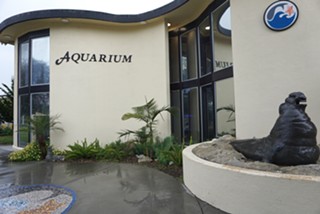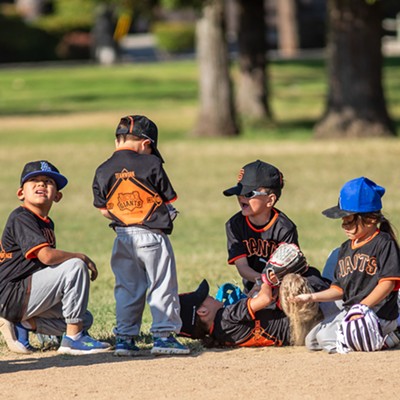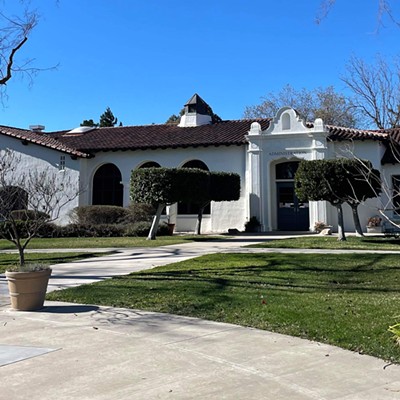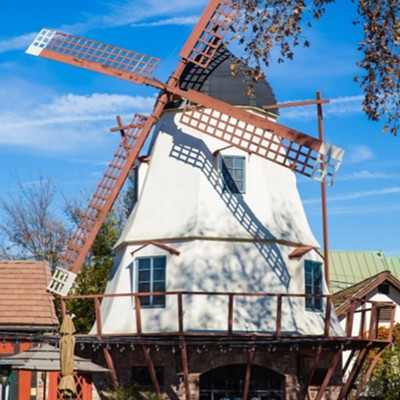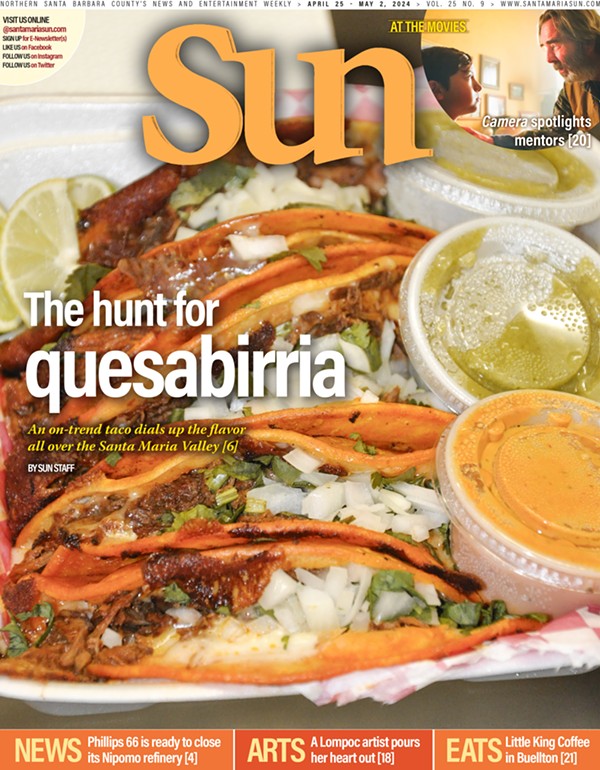A 1-year-old octopus gently wrapped one of its tentacles around Jenna Gorndt’s fingers as the Cabrillo High School senior lightly touched the top of its aquarium.
“I think it’s cool, having an animal that can recognize you when you’re trying to interact with her, because most animals, they aren’t going to be this excited to see someone,” she said.
Gorndt works as one of the octopus curators for the Cabrillo High School Aquarium—a marine science and Career Technical Education program at the Lompoc school. Gorndt’s role that she shares with a fellow student includes feeding the octopus five times a week and creating games for the eight-armed, nine-brained, animal to keep her stimulated, she said.
“She is a very food-motivated animal so we have a lot of puzzles for when she has her food,” Brandt said. “They are really smart and they need to have different enrichment to help them out.”
Since the octopus’s arrival in September, she’s learned what Gorndt looks like with strong eyesight and what Gorndt tastes like with her arm’s suckers, she said. The octopus also has rearranged her tank how she likes and has become more comfortable around people.
“She always has her eyes locked on someone when she’s moving around, like this,” she said as the octopus floated closer to the glass near Gorndt. “It’s just a very interesting animal to take care of, and I think that’s my favorite part of it.”
Gorndt is one of several students going through the aquarium’s Career Technical Education program, which gives students both the technical and soft skills needed for entry-level positions in aquarium work, said Greg Eisen, the aquarium’s director. During their time in the program, students take corresponding science classes and complete a final project their senior year. Students have gone on to work in the Monterey, San Diego, and Honolulu aquariums and the Catalina Marine Institute to continue their work after graduating.
“Since our earth is 71 percent covered by water, this is a great way to spread awareness about the ocean and its inhabitants. We want to inspire conservation of our oceans,” Eisen said.
Students do this by leading aquarium tours, hosting field trips for elementary school students, and holding open houses for the general public. Residents can stop by on April 17 to join students in an Earth Day celebration where they will highlight the ways people can help marine habitat thrive, or on May 15 to see the latest and largest exhibit in the aquarium’s history that highlights the California wetlands.
The aquarium program began in 1986 with Dave Long, a former teacher, who worked with a student on a research project, Eisen said.
“Long was an avid scuba diver and loved the ocean, but he was also a coach, and he had this vision,” Eisen said. “He thought, ‘Why can’t we have in academia something like this stadium or gymnasium where the community comes and gets excited about what the students are doing?’”
The project blossomed into a student club where a few students met every day in a classroom that had a few tanks to care for the animals. In 2000, the school received the funding through an array of grants for its current aquarium facility, which hosts 13 to 15 exhibits and is led by Eisen and three other science teachers. Through a scientific collector’s permit, the aquarium sciences program takes students out on field trips to collect animals for the exhibits.
“We are restricted from certain species. We do it in a sustainable fashion. Our goal is the conservation of these species,” Eisen said.
The students in the aquarium science program curate each exhibit, advocate for continued funding, and host field trips for neighboring elementary schools three times a week.
“The No. 1 compliment that we receive from visitors to our aquarium is the students,” Eisen said. “We are a student-run program—from feeding the animals to taking care of the exhibits. They create the designs, the projects for open houses, and they also help to create the lessons for various grade levels for students.”
The aquarium sees about 8,000 visitors a year through field trips and open houses, which welcome the general public into the facility to see the students’ work and learn more about local sea life, he said.
“That number has been increasing as we have developed some good programming and getting new exhibits, expanding into the nearby classrooms, and the aquarium is growing,” Eisen said.
Students came to school during their spring break to gear up for the latest exhibit: a 1,200-gallon California wetlands exhibit, which is meant to emulate the Santa Ynez estuary in Lompoc and will host a variety of flatfish species—modeled after the Monterey Bay Aquarium’s touch tank exhibit where visitors can reach in and touch the animals if they wish.
On April 5, students helped drain tanks and temporarily relocate animals in order to make way for the incoming tank, along with routine feeding and cleaning responsibilities. Sand sharks and horn sharks swam in their tanks and students cleaned the interactive tide pool exhibit—which holds colorful starfish, anemones, and sea urchins.
Smaller tanks lined the back of Eisen’s classroom, filled with shark eggs, the octopus, and smaller fish species. The aquarium buzzed with energy as students chatted and laughed while they worked.
The wetlands exhibit is a part of a multiphased program expansion, with goals to build out its tropical gallery, which showcases colorful fish and coral species from marine ecosystems in warmer climates, and develop a new education center, Eisen said.
“The purpose of that would be because we are hosting the elementary tours for several hours—this would be a great venue for us to do the labs that we run and create a home base for the elementary children,” Eisen said.
Former student Adam Wilson joined the hustle and bustle on April 5—home after graduating from CSU Monterey Bay in December. Wilson graduated from Cabrillo in 2020, where he and fellow students completed their year in quarantine during the COVID-19 pandemic.
“For the beginning of it, since it was a hard quarantine, it was one of the advisors [that] would come in and do all of the feeding, all the normal maintenance. It was the most important stuff like cleaning a filter if it was bad, doing a water change if they really needed it,” Wilson said. “It’s weird coming back now and seeing this many people.”
Wilson joined the aquarium sciences program as a sophomore because he needed an elective, but wasn’t sure what he’d get out of it, he said.
“My freshman year I was talking to recruiters at the Air Force Academy for mechanical engineering because I had no clue what I wanted to do, and then being in here showed me that these hands-on things like learning about all of these animals and caring for them, it was really game-changing for me.”
During his time in the program, Wilson worked on fundraising efforts to eventually establish the interactive tide pool exhibit and two new filtration systems. He went on to study marine science at CSU Monterey where he joined the dive program and participated in several research projects, he said.
Working at the Cabrillo aquarium with kids gave Wilson “a love for teaching,” and he plans to work at the Catalina Island Marine Institute’s school year program, Sea Me, he said.
“I hope to teach; I want to come back to this high school obviously and work here again, but I want to become a teacher afterwards,” Wilson said. “This program’s really shaped who I am.”
Reach Staff Writer Taylor O’Connor at [email protected].



